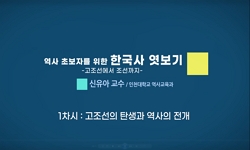Shinjoongdo of the late Joseon that has many groups of gods is total architectural drawing including not only Guardian Gods of Law but also the China and Korean folk gods. This reflects that Shinjoongdo for the external support of the law of Buddha ac...
http://chineseinput.net/에서 pinyin(병음)방식으로 중국어를 변환할 수 있습니다.
변환된 중국어를 복사하여 사용하시면 됩니다.
- 中文 을 입력하시려면 zhongwen을 입력하시고 space를누르시면됩니다.
- 北京 을 입력하시려면 beijing을 입력하시고 space를 누르시면 됩니다.
https://www.riss.kr/link?id=A109300735
- 저자
- 발행기관
- 학술지명
- 권호사항
-
발행연도
2011
-
작성언어
-
-
주제어
Bokcheonam ; Shinjoongdo ; Shinjoongdo figure ; the late Joseon ; Shin Gyum ; Suryukje ; 福泉庵 ; 神衆圖 ; 神衆圖像 ; 朝鮮後期 ; 信謙 ; 水陸齊
-
KDC
900
-
등재정보
KCI등재후보
-
자료형태
학술저널
-
수록면
185-226(42쪽)
- 제공처
-
0
상세조회 -
0
다운로드
부가정보
다국어 초록 (Multilingual Abstract)
Among this, <Shinjoongdo> of Bokcheonam made in 1795 is very important to have a chaning aspect of Shinjoongdo that was regularized from the late eighteen century, that is, a transitional features of 18, 19th century in the architecture and style. Not only for this, this <Shinjoongdo> has a Buddhist painting style of eighteenth century that is superior in expressing technique and style, so it can be reviewed for the history of Buddhist painting style.
The group of artists of <Shinjoongdo> of Bokcheonam can be identified by the tools of painting; They are the artists with the rich ability of painting and dignity from Kyeongsangdo area centering of Shin Gyum, the headmaster artist, and it could help personal style of painting to be reflected on the work.
This <Shinjoongdo> that has total 31 gods is consisted of the rank of the god to place the gods on the top, middle and bottom by 『Seokmoonuibum.』This is the point to observe an aspect of the organization of god rank in Shinjoongdo of the late eighteen century; it make different with the nineteenth century that the folk god appeared frequently. That is, this work has a feature that does not include lower crowd part of the gods. But this work has some named gods and this reflects a feature of Shinjoongdo of the late Joseon, so this is a homework to be solved in the future.
The style of <Shinjoongdo> of Bokcheonam has a high degree of completion of picture by professional artists based on the maturity of the Buddhist painting in eighteenth century. It took a composition that freely used oval and horizontality in a perspective group composition, and it is natural that weight feeling or exaggeration is removed in a form. Even in color, it is not restricted in a major color like blue, green and red; it used various color and gave liveliness in the canvas. It comes through the use of a pattern mixing geometrical pattern and natural pattern. In addition, a delicate drawing enhanced feature and sense of shape from detalied parts of face to contours.
Shinjoongdo of the late Joseon that has many groups of gods is total architectural drawing including not only Guardian Gods of Law but also the China and Korean folk gods. This reflects that Shinjoongdo for the external support of the law of Buddha accepted various blessing gods derived from the changing generation. Especially as gods increased more from the late eighteenth century, the display got more and more complicated. That is, Shinjoongdo with many large groups of gods shows on the canvas centering of Sakra devānām Indra, Brahma-Deva appeared.
Among this, <Shinjoongdo> of Bokcheonam made in 1795 is very important to have a chaning aspect of Shinjoongdo that was regularized from the late eighteen century, that is, a transitional features of 18, 19th century in the architecture and style. Not only for this, this <Shinjoongdo> has a Buddhist painting style of eighteenth century that is superior in expressing technique and style, so it can be reviewed for the history of Buddhist painting style.
The group of artists of <Shinjoongdo> of Bokcheonam can be identified by the tools of painting; They are the artists with the rich ability of painting and dignity from Kyeongsangdo area centering of Shin Gyum, the headmaster artist, and it could help personal style of painting to be reflected on the work.
This <Shinjoongdo> that has total 31 gods is consisted of the rank of the god to place the gods on the top, middle and bottom by 『Seokmoonuibum.』This is the point to observe an aspect of the organization of god rank in Shinjoongdo of the late eighteen century; it make different with the nineteenth century that the folk god appeared frequently. That is, this work has a feature that does not include lower crowd part of the gods. But this work has some named gods and this reflects a feature of Shinjoongdo of the late Joseon, so this is a homework to be solved in the future.
The style of <Shinjoongdo> of Bokcheonam has a high degree of completion of picture by professional artists based on the maturity of the Buddhist painting in eighteenth century. It took a composition that freely used oval and horizontality in a perspective group composition, and it is natural that weight feeling or exaggeration is removed in a form. Even in color, it is not restricted in a major color like blue, green and red; it used various color and gave liveliness in the canvas. It comes through the use of a pattern mixing geometrical pattern and natural pattern. In addition, a delicate drawing enhanced feature and sense of shape from detalied parts of face to contours.
목차 (Table of Contents)
- Ⅰ. 머리말
- Ⅱ. 복천암 소장〈신중도〉의 현황
- Ⅲ. 神位構成
- Ⅳ. 양식적 특징
- Ⅴ. 맺는말
- Ⅰ. 머리말
- Ⅱ. 복천암 소장〈신중도〉의 현황
- Ⅲ. 神位構成
- Ⅳ. 양식적 특징
- Ⅴ. 맺는말





 스콜라
스콜라


